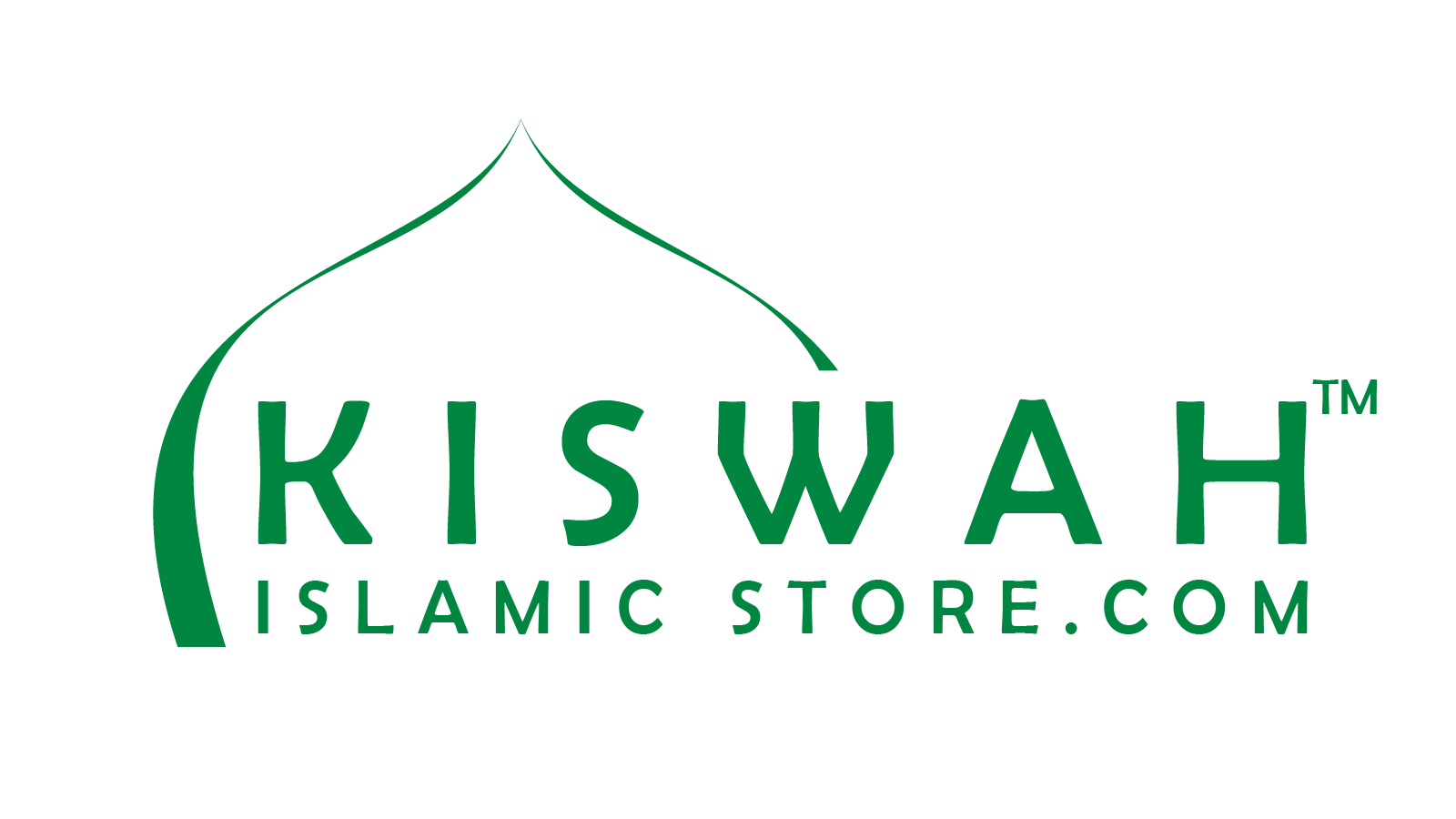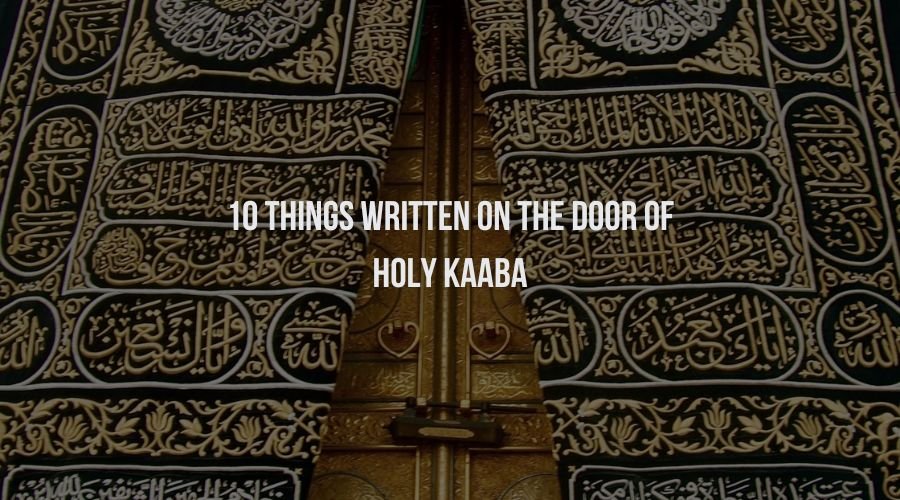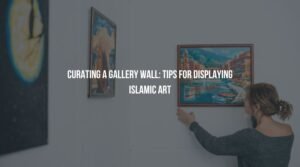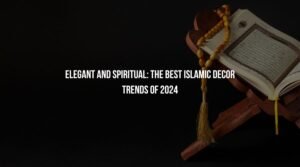The ten Arabic inscriptions on the Kaaba’s door are composed of both Quranic and non-Quranic verses, both of which are extremely important.
This article gets you into the significance of ten particular inscriptions on the Kaaba, examining the Quranic verses they refer to and the spiritual profundity they impart to this most sacred of Islamic sites.
The Kaaba, located in Makkah, is a revered building of great religious significance in Islam. The Kaaba cover’s exterior is covered in deeply meaningful Quranic ayahs and is made of draped black velvet.
1. At The Centre
An ayat from Quran 48:27, located at the top right of the Kaaba, announces the fulfilment of the dream in which the Prophet Muhammad (PBUH) performed the Umrah.
Allah promises believers that believers would eventually be allowed to enter Masjid Al Haram peacefully, even in the face of opposition from Makkah’s unbelievers. The ayat reminds believers that trials are fleeting and emphasises the value of holding fast throughout difficult times.
2. On the right, in a circular pattern (Quran 112/1-4)
The verses from Quran 112:1-4 on the circular pattern declare Allah’s oneness and uniqueness. The ayat highlights Allah’s uniqueness, independence, and lack of a son.
This ayat, Surah Al Ikhlas, declares that Allah is not begotten, nor is He begotten, and that no one is comparable to Him. This gives a clear grasp of the Divine Being’s uniqueness and incomparability.
3. On the left, in a circular pattern (Quran 48/29)
Quran 48:29 highlights the kindness and power of Prophet Muhammad and his companions in a circle around the Kaaba. It speaks of their kindness for one other and their strong position against unbelievers.
Their physical postures during prayer, such as bending and prostrating, are mentioned, which emphasises the genuineness and intensity of their worship.
This Ayat, which was revealed to believers during a period of strength, imparts balance. It underlines how crucial it is to uphold one’s beliefs while cultivating compassion for one’s Muslim brothers and sisters.
4. To the left of the circular pattern and below the circular figure on the right (Quran 24/35)
One of the main ayats above the left circular pattern quotes Quran 24:35, emphasising Allah’s role as the light-bearer of the world and skies.
Furthermore, the ayat emphasises Muhammad’s prophetic role as the reliable messenger and reveals the fact of Allah’s oneness beneath the circular pattern on the right.
The verse from the Quran emphasises the significance of the final Islamic prophet as a beacon of truth for humanity.
5. Along Quran 2/144, the Upper Section
Quran 2:144, written at the upper portion, talks about the Qibla changing. It recognises the habit of Prophet Muhammad (PBUH) looking up at the sky in anticipation of Allah’s instruction to return the Qibla to the Kaaba.
This passage promises the establishment of a Qibla that follows Prophet Ibrahim (Abraham)’s tradition and will eventually satisfy Prophet Muhammad (peace be upon him).
6. Along the Quran 3/134 Upper Long Section
Quran 3:134 exhorts believers to go quickly towards forgiveness in the upper lengthy portion, as Jannah gets ready for the righteous.
The inscription exhorts Muslims to work towards both forgiveness and heaven by highlighting Allah’s promise of recompense for the upright and those with Taqwa.
7. In East Jerusalem (Quran 2/255)
Ayat ul Kursi, on the southern facade, is Quran 2:255 and declares the magnificence of Allah.
The qualities of Allah are elegantly described in Ayat al-Kursi, which affirms His eternal existence, all-encompassing wisdom, and sovereign control over the world and the heavens.
8. On the strip on the right side (Quran 1/1–7)
The first few lines of Surah Al-Fatiha, which praise Allah as the Rabb, the Most Compassionate, and the Most Merciful, open Quran 1:1–7 on the northern facade. A dua called Surah Al-Fatiha is recited during prayer.
The Surah gives thanks to Allah, confesses His mercy, and asks for direction towards the truth. One of the requests in the supplication is for help in worshipping Allah alone.
9. Below the circular pattern on the right, at the lower side (Quran 106/1–4)
Quran 106:1-4 on the western side reminds the Quraish of their blessings and calls them to give thanks and worship Allah, the Kaaba’s Rabb.
The Quraysh tribe is poignantly reminded by these words of the blessings they have received from Allah, such as safety, ease of travel, and sustenance amid times of terror and famine.
10. Text inscribed close to the base (not from the Quran)
A non-Quranic inscription near the foot of the Kaaba mentions Makkah Al Mukarramah as the place where the Kaaba cover was made.
Recognising the sacred nature of this gift, it communicates a gift for the Kaaba from King Salman bin Abdulaziz Al Saud, Custodian of the Two Holy Mosques, along with a sincere prayer for Allah’s acceptance.




